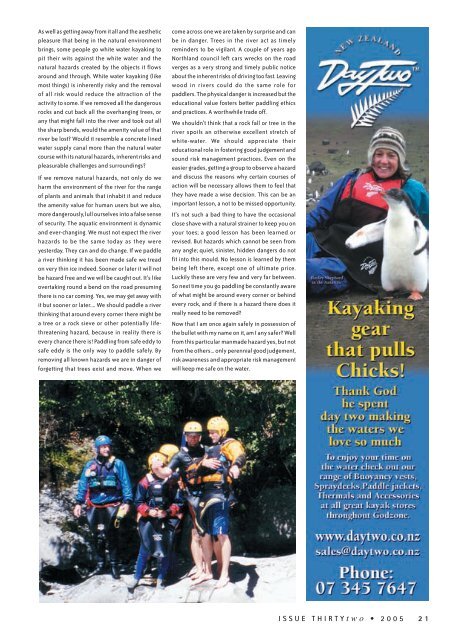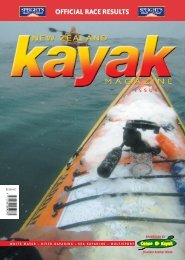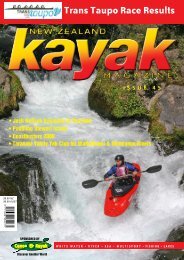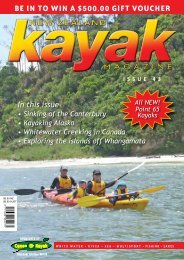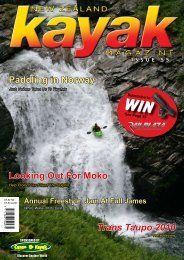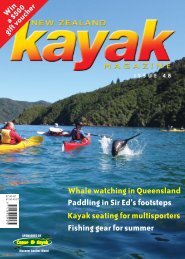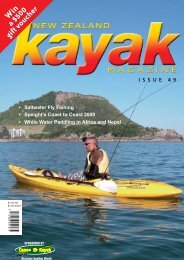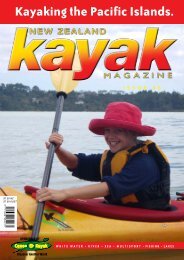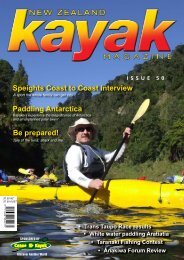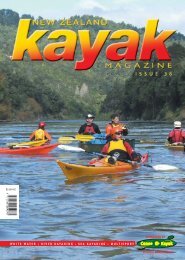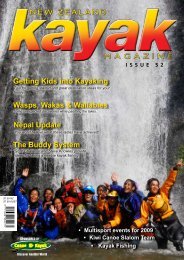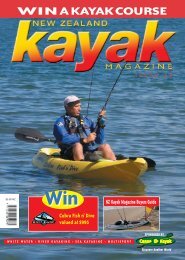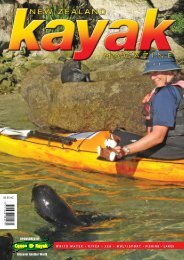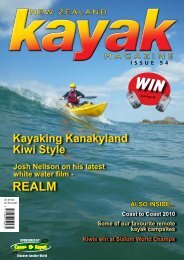Win - Canoe & Kayak
Win - Canoe & Kayak
Win - Canoe & Kayak
- No tags were found...
You also want an ePaper? Increase the reach of your titles
YUMPU automatically turns print PDFs into web optimized ePapers that Google loves.
As well as getting away from it all and the aestheticpleasure that being in the natural environmentbrings, some people go white water kayaking topit their wits against the white water and thenatural hazards created by the objects it flowsaround and through. White water kayaking (likemost things) is inherently risky and the removalof all risk would reduce the attraction of theactivity to some. If we removed all the dangerousrocks and cut back all the overhanging trees, orany that might fall into the river and took out allthe sharp bends, would the amenity value of thatriver be lost? Would it resemble a concrete linedwater supply canal more than the natural watercourse with its natural hazards, inherent risks andpleasurable challenges and surroundings?If we remove natural hazards, not only do weharm the environment of the river for the rangeof plants and animals that inhabit it and reducethe amenity value for human users but we also,more dangerously, lull ourselves into a false senseof security. The aquatic environment is dynamicand ever-changing. We must not expect the riverhazards to be the same today as they wereyesterday. They can and do change. If we paddlea river thinking it has been made safe we treadon very thin ice indeed. Sooner or later it will notbe hazard free and we will be caught out. It’s likeovertaking round a bend on the road presumingthere is no car coming. Yes, we may get away withit but sooner or later.... We should paddle a riverthinking that around every corner there might bea tree or a rock sieve or other potentially lifethreateninghazard, because in reality there isevery chance there is! Paddling from safe eddy tosafe eddy is the only way to paddle safely. Byremoving all known hazards we are in danger offorgetting that trees exist and move. When wecome across one we are taken by surprise and canbe in danger. Trees in the river act as timelyreminders to be vigilant. A couple of years agoNorthland council left cars wrecks on the roadverges as a very strong and timely public noticeabout the inherent risks of driving too fast. Leavingwood in rivers could do the same role forpaddlers. The physical danger is increased but theeducational value fosters better paddling ethicsand practices. A worthwhile trade off.We shouldn’t think that a rock fall or tree in theriver spoils an otherwise excellent stretch ofwhite-water. We should appreciate theireducational role in fostering good judgement andsound risk management practices. Even on theeasier grades, getting a group to observe a hazardand discuss the reasons why certain courses ofaction will be necessary allows them to feel thatthey have made a wise decision. This can be animportant lesson, a not to be missed opportunity.It’s not such a bad thing to have the occasionalclose shave with a natural strainer to keep you onyour toes; a good lesson has been learned orrevised. But hazards which cannot be seen fromany angle; quiet, sinister, hidden dangers do notfit into this mould. No lesson is learned by thembeing left there, except one of ultimate price.Luckily these are very few and very far between.So next time you go paddling be constantly awareof what might be around every corner or behindevery rock, and if there is a hazard there does itreally need to be removed?Now that I am once again safely in possession ofthe bullet with my name on it, am I any safer? Wellfrom this particular manmade hazard yes, but notfrom the others... only perennial good judgement,risk awareness and appropriate risk managementwill keep me safe on the water.ISSUE THIRTYtwo • 2005 21


